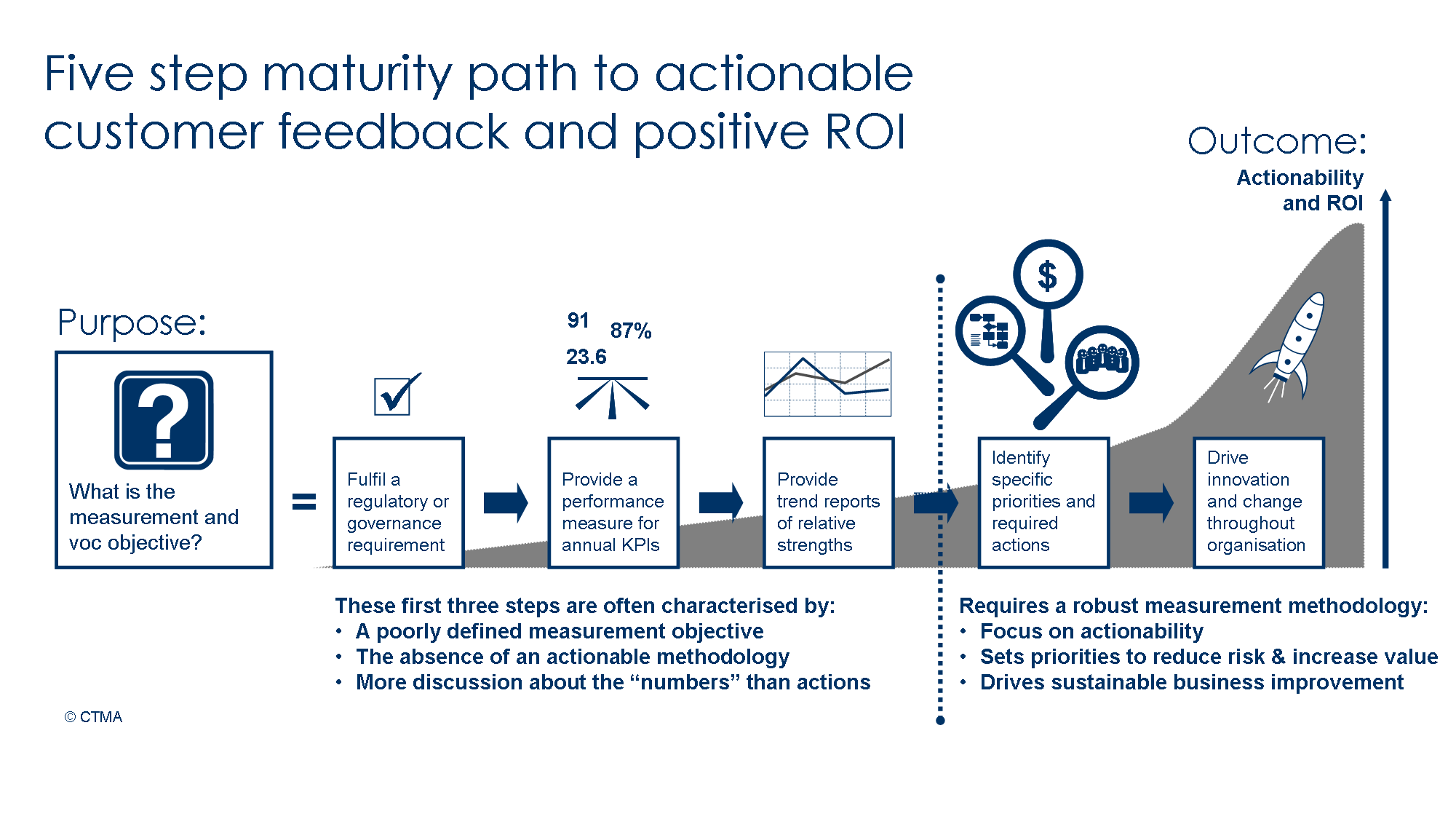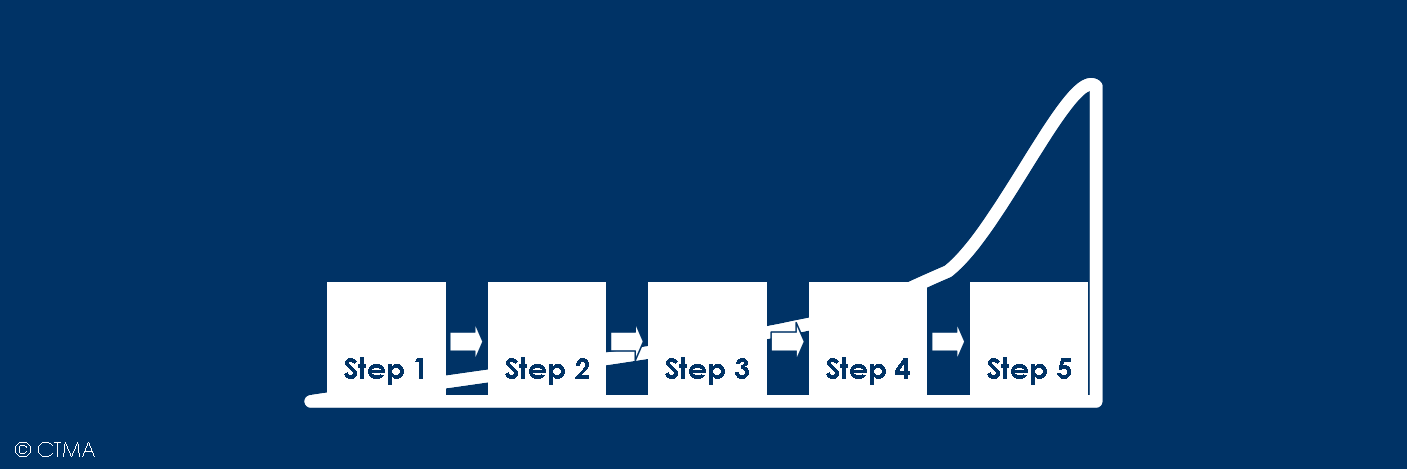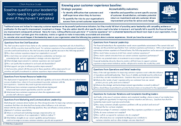Satisfaction measurement and voice-of-the-customer
Five-step
maturity path to
actionable customer feedback and a positive ROI
By Paul Linnell
Decades of measuring customer experience has left the boardroom, and entire businesses, spending more time debating “what numbers to use”
to measure it, than “what actions to take” to improve it.
The really sad thing is that even though customers are one of the best sources
of insight for innovation and business improvement, for many
organisations customer experience measurement has become no more than a
form of costly, and often unactionable, market intelligence.
If you are spending heaps on voice-of-the-customer and satisfaction
measurement programmes, and not seeing any improvements - you are not
alone. From reviewing voice-of-the-customer and measurement programmes in many industries around the world, we’ve found that measurement objectives and effectiveness vary considerably. From organisations that measure customer satisfaction only because it’s a regulatory requirement, to those that
use customer insights to drive innovation and change, and revolutionise the value they provide their customers.
This journey of increasing effectiveness can be characterised in terms of a
five step maturity path, along which many organisations set out, but
frequently only reach half-way. The return on investment and
business success that organisations achieve from their voice-of-the-customer and customer experience measurement programmes is often limited by a combination of a poorly defined measurement objective and the absence of an actionable methodology.

Step 1: Ticking the regulatory box
Organisations driven primarily by a need to fulfill a regulatory or
governance requirement generally learn little or nothing about how to actually improve customer experiences or their business. Subsequently, their investment in measurement rarely achieves any positive change for the organisation or its customers.
Step 2: Providing an annual KPI
Those organisations measuring customer experience primarily to
obtain scores and indices such as a “CSI”, “% satisfied” or
other popular advocacy, loyalty and effort “scores”, sometimes achieve an increased focus on customer care, but seldom generate the insight to know what to do to improve it. This often results in
unactionable KPIs and (as mentioned earlier) more discussion about “what numbers to use” than about “what actions to take”.
Step 3: Monitoring the trends
Organisations that use customer feedback to obtain trends, and measures of relative performance, have made a valuable step towards actionability.
But often, with a difficulty in assigning priorities to the improvements that might bring the greatest return, and a lack of specificity in identifying the remedial actions to take,
this often results in more costly broad-brushed solutions with uncertain benefits.
(For example, “let’s send everyone on a customer service course”, or “let’s map all of our customer journeys”, or
“let’s get some new
technology”).
Step 4: Identifying actions
A significantly positive return on investment begins to occur when the measurement objective and methodology provide
clarity in action and priority. With this approach it becomes possible for an organisation to learn specifically what actions need to be taken, and where, to obtain the best return on service improvement investments.
This keeps resources focused on taking actions that matter, and being
able to monitor results.
Step 5: Driving innovation
The greatest returns are obtained when organisations combine the
voice-of-the-customer, customer experience measurement, and ad hoc customer feedback to drive innovation and change throughout the business.
Building on the continuous improvement capability described above, this approach
can identify new opportunities to provide value to customers and even inspire the introduction
of new products and services and new business models. The customer-tuned enterprise is one that adopts strategies, frameworks and
disciplines to capture customer insight and turn it into management actions
that bring measurable benefits to the organisation and its customers.
Baseline questions your leadership team needs to get answered
It’s a tough challenge to change the discussion throughout an organisation from
one of reassuringly obscure “numbers”, to one of accountability and “taking action”.
Most senior management teams already have a strong instinct that
customer experience is important, but many lack the baseline
measurements to back-up the financial benefits and risks, and set
meaningful priorities for change.
By establishing a financially-driven customer experience
baseline, and getting the answers to some important questions, the
discussion at all levels of the organisation soon shifts to priorities for improvement, innovation,
value-creation, and potential returns on investment.
Get a copy of our practice guide and put the maturity path to the test.
Check how many
of these important questions you can already answer for your leadership team.
©
CTMA New Zealand Ltd.
For more...
For more information about the CTMA approach to
turning the voice-of-the-customer into management actions, join our
reading room, or if we can help you more directly -
please
get in touch, and we can schedule an introductory
discussion.

Upcoming events:
From time-to-time we also run workshops, masterclasses, roadshows and
online training courses to help organisations accelerate their progress
down their path to success. Please check
here for information about our
upcoming public events or how to book an
in-house masterclass.
©
CTMA New Zealand Ltd.

About the author: Paul Linnell
 Paul Linnell is a customer experience and service quality
improvement champion, working internationally with senior managers
and their teams to help them achieve business success, reduce risk
and build customer loyalty and advocacy by taking actions to improve
customer experiences. Paul specialises in the design and deployment
of customer experience measurement, service quality improvement,
complaints handling and preventive analysis programmes. Industries
he has worked with include, Automotive, Consumer electronics,
Consumer goods, Electricity & Gas retail, Financial services,
Information technology, Local Government and Public Sector, Media /
Publishing, Passenger travel (Rail, Air and Sea), Pharmaceuticals
and Telecommunication. Paul has worked with clients and presented on
these subject at conferences and corporate events in the UK, Europe,
North America, the Middle East, Australia and New Zealand.
Originally from the UK and now based in New Zealand, he continues to
serve clients globally.
Paul Linnell is a customer experience and service quality
improvement champion, working internationally with senior managers
and their teams to help them achieve business success, reduce risk
and build customer loyalty and advocacy by taking actions to improve
customer experiences. Paul specialises in the design and deployment
of customer experience measurement, service quality improvement,
complaints handling and preventive analysis programmes. Industries
he has worked with include, Automotive, Consumer electronics,
Consumer goods, Electricity & Gas retail, Financial services,
Information technology, Local Government and Public Sector, Media /
Publishing, Passenger travel (Rail, Air and Sea), Pharmaceuticals
and Telecommunication. Paul has worked with clients and presented on
these subject at conferences and corporate events in the UK, Europe,
North America, the Middle East, Australia and New Zealand.
Originally from the UK and now based in New Zealand, he continues to
serve clients globally.
 Google+
Google+




 Paul Linnell is a customer experience and service quality
improvement champion, working internationally with senior managers
and their teams to help them achieve business success, reduce risk
and build customer loyalty and advocacy by taking actions to improve
customer experiences. Paul specialises in the design and deployment
of customer experience measurement, service quality improvement,
complaints handling and preventive analysis programmes. Industries
he has worked with include, Automotive, Consumer electronics,
Consumer goods, Electricity & Gas retail, Financial services,
Information technology, Local Government and Public Sector, Media /
Publishing, Passenger travel (Rail, Air and Sea), Pharmaceuticals
and Telecommunication. Paul has worked with clients and presented on
these subject at conferences and corporate events in the UK, Europe,
North America, the Middle East, Australia and New Zealand.
Originally from the UK and now based in New Zealand, he continues to
serve clients globally.
Paul Linnell is a customer experience and service quality
improvement champion, working internationally with senior managers
and their teams to help them achieve business success, reduce risk
and build customer loyalty and advocacy by taking actions to improve
customer experiences. Paul specialises in the design and deployment
of customer experience measurement, service quality improvement,
complaints handling and preventive analysis programmes. Industries
he has worked with include, Automotive, Consumer electronics,
Consumer goods, Electricity & Gas retail, Financial services,
Information technology, Local Government and Public Sector, Media /
Publishing, Passenger travel (Rail, Air and Sea), Pharmaceuticals
and Telecommunication. Paul has worked with clients and presented on
these subject at conferences and corporate events in the UK, Europe,
North America, the Middle East, Australia and New Zealand.
Originally from the UK and now based in New Zealand, he continues to
serve clients globally.